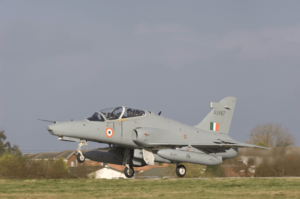Have you ever made a plane out of paper and have thrown it in the air? Remember, it covered different distances when thrown multiple times. It’s because many forces are acting on it. Let’s understand forces acting on an aircraft together!

All aircraft fly due to the forces acting upon them during the flight. A-Force is defined as an action that causes a physical movement or change in a body. Force is a vector quantity having both a direction and magnitude. In the case of an Aircraft, four forces are acting on a Powered Aircraft during its flight in four different directions. These forces enable the aircraft to move it forward, backward, up, and down.
Weight or Gravity: Weight is a downward natural force caused by gravity, acting towards the center of the earth. The magnitude of weight force depends on several factors such as the mass of all parts of the aircraft, fuel, payload onboard like passengers, cargo, luggage, etc. It opposes the lift force acting on the aircraft.
Air Drag: Drag is a natural resistance force acting opposite in the direction of motion of the aircraft. When an aircraft moves in the air, it disrupts the airflow, resulting in friction and the difference in air pressure, thus generating darg. The factors which affect the magnitude of drag are the shape, velocity, etc. of the aircraft. It opposes the thrust force acting on the aircraft. It is also sometimes known as the friction in the air.

Thrust: Thrust is a forward reaction force generated by the propulsion system of an aircraft. The direction of the force depends on the attachment of the engines in an aircraft. It is created artificially to oppose the drag force acting on the aircraft. In an engine, the air is pulled in and then pushed out with higher velocity in the opposite direction, thus generating thrust. It operates on the principle of Newton’s 3rd law of motion.
Lift: Lift is an upward force generated with the help of the wings (airfoil) of an aircraft. It is created artificially and acts in the opposite direction of the weight force. An aircraft can fly in the air because of the lift. It acts perpendicular to the direction of the flight. Airfoils are responsible for generating lift.
Several theories are explaining how the lift is generated, but the most famous one is Bernoulli’s principle. It states that when an airfoil glides in the air a pressure difference accompanied by velocity difference is created on the airfoil which generates lift. The factors which affect the magnitude of lift are the shape, velocity, etc. of the aircraft.
These forces are acting on all the aircraft. Lift works opposite to weight and thrust works opposite to drag. The aircraft will move forward when thrust is more than the darg and up when the lift is more than the weight. In a steady flight, all the forces will balance out each other and the resultant sum will be zero.

* The information provided herein is, to the best of our knowledge and is only for informative purpose. If you have a news update or correction, let us know at -info@garudauniverse.com




